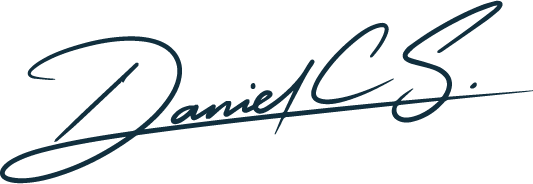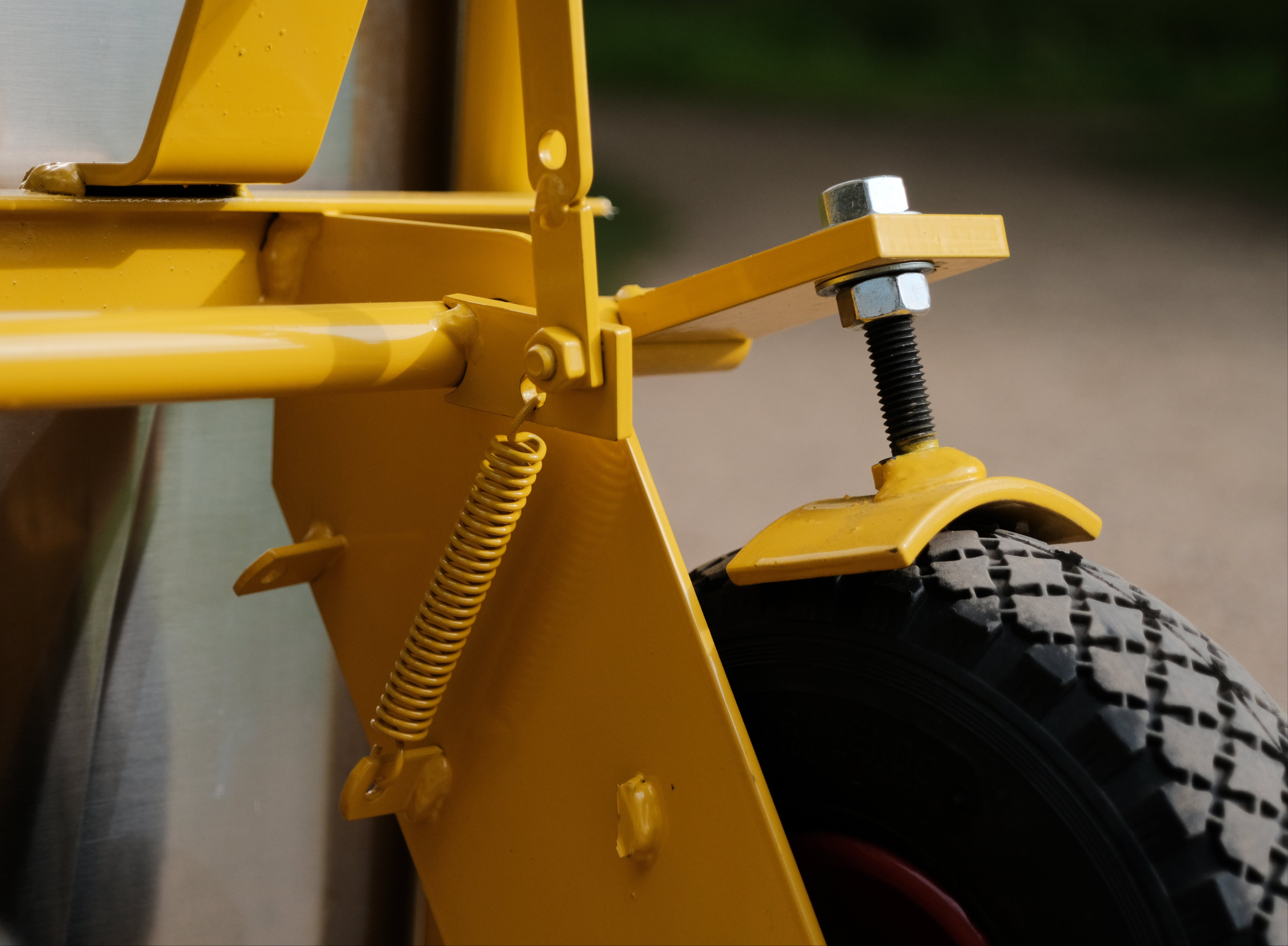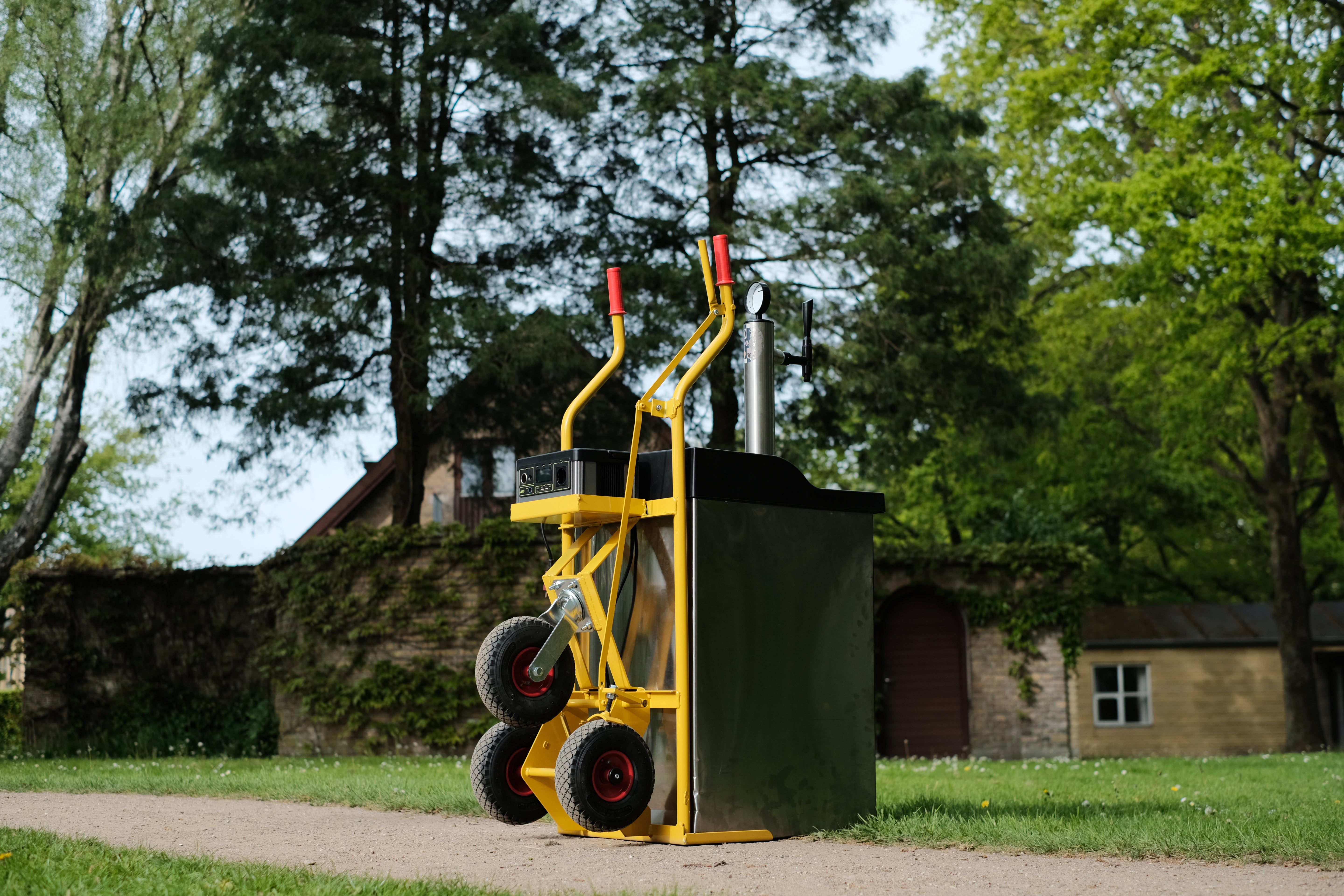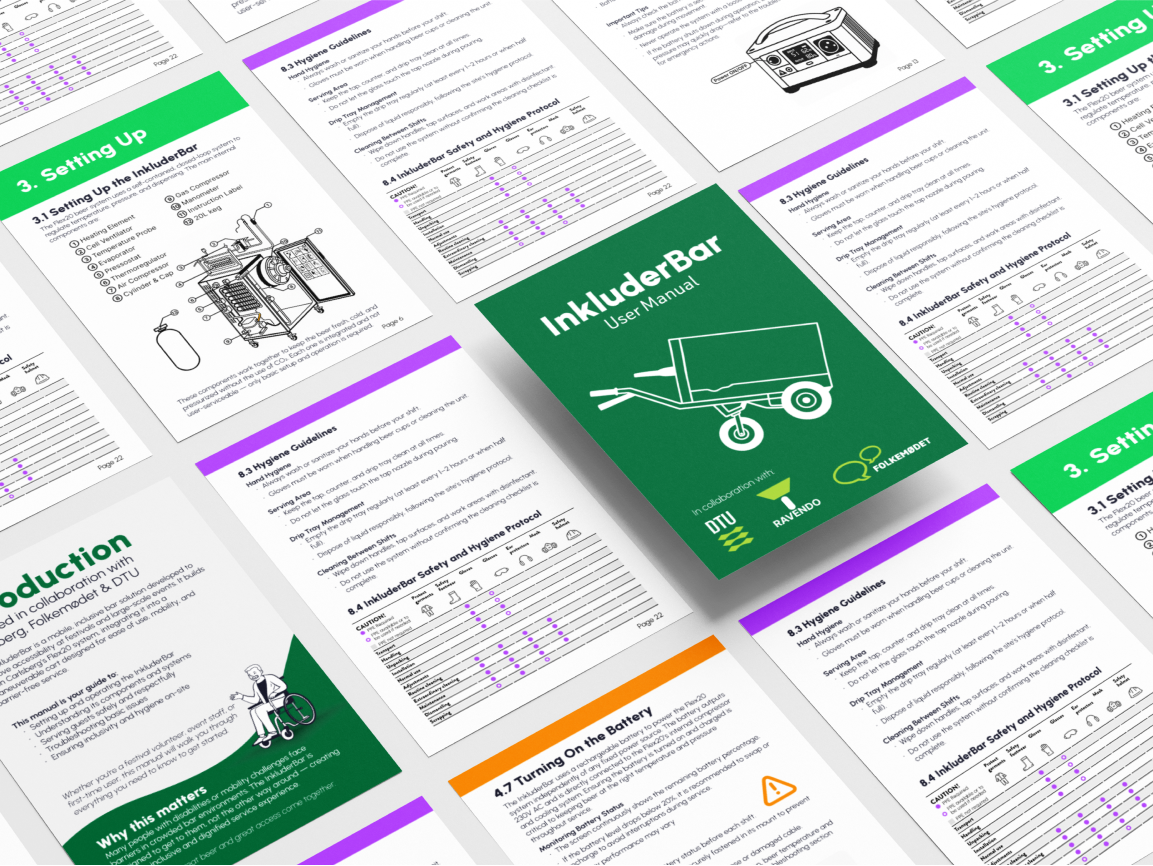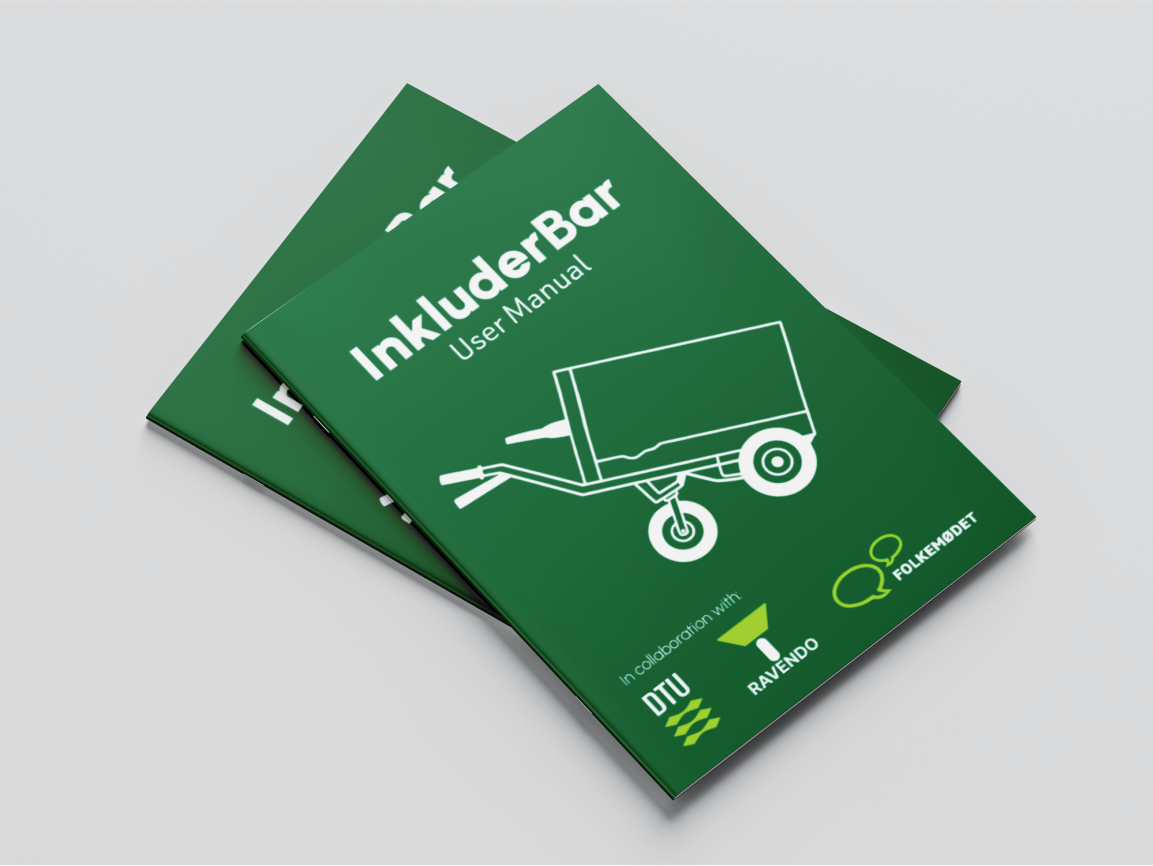FlexBar
Mobile Beer Serving for Carlsberg

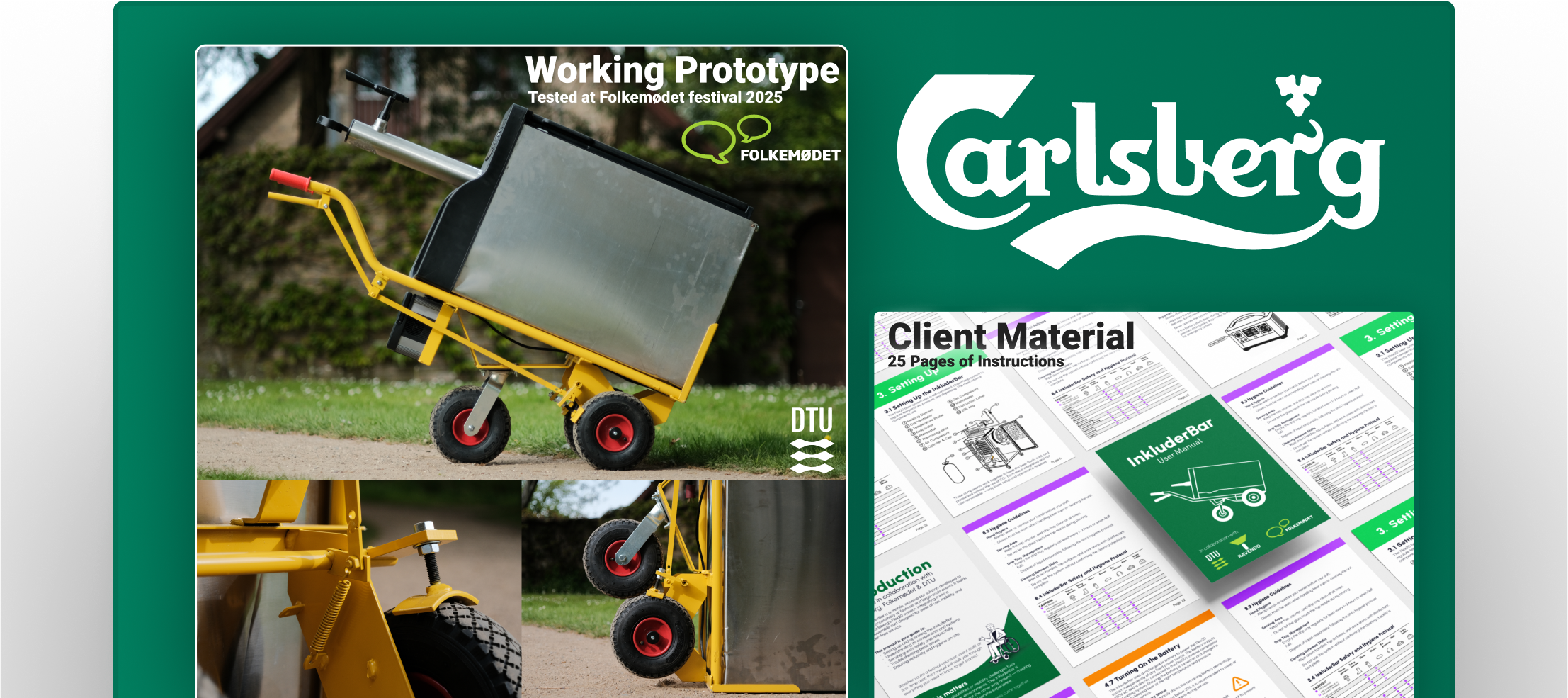
The Challenge:
Serving Smarter at Scale
Carlsberg’s Flex20 system delivers high-quality draft beer using portable PET kegs and closed pressure systems. But the setup is not designed for agile, on-the-go service at crowded or uneven festival grounds. The goal was not to redesign the Flex20 — but to extend its usability by designing a transport system that works with the existing infrastructure, improves accessibility, and enables quick deployment of mobile bar units in difficult locations.
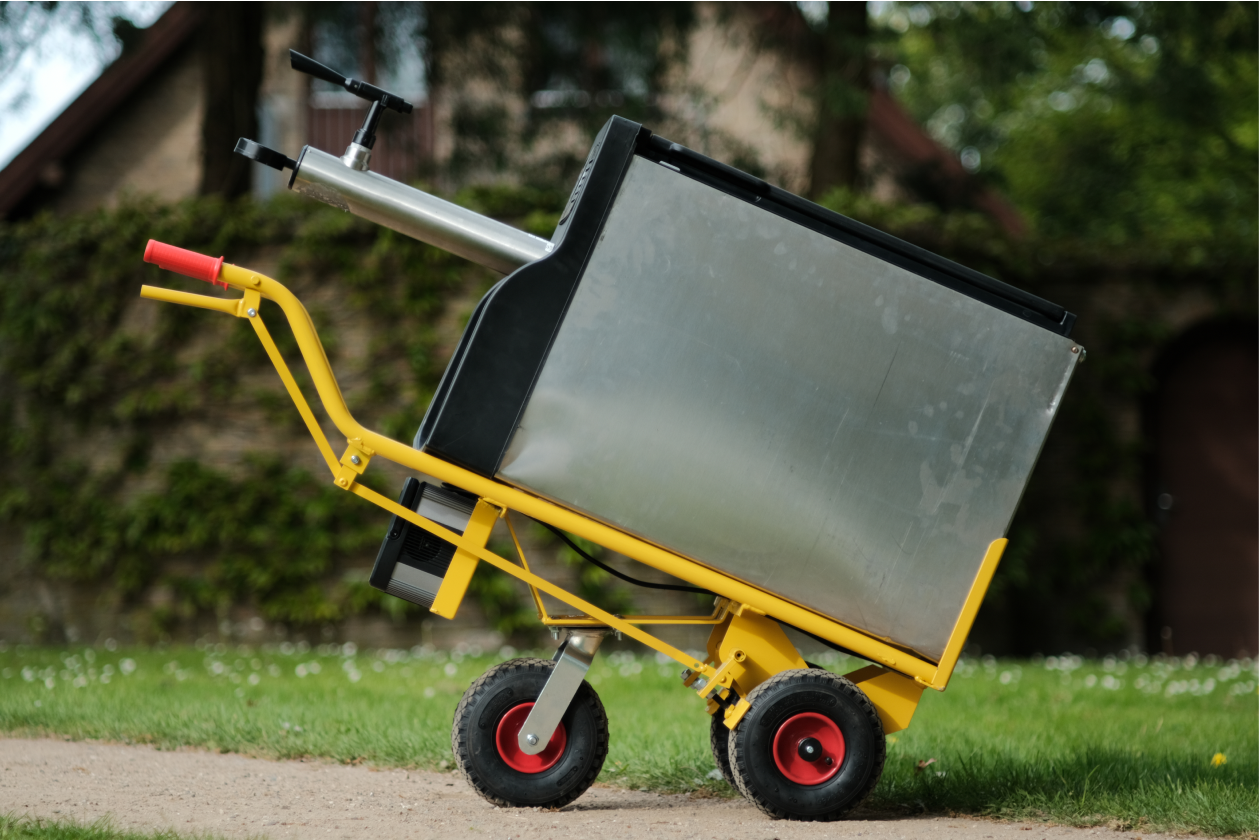

Working with Carlsberg & Ravendo
This project was developed in close partnership with Carlsberg and Ravendo. Carlsberg contributed access to their Flex20 draft system, detailed engineering documentation, and valuable input from their technical team, ensuring the final concept aligned with their existing infrastructure and requirements. Ravendo supported the development and manufacturing of the physical platform, offering hands-on expertise in ergonomic design, material choices, and production methods. Their involvement made it possible to deliver a functional, testable prototype. The collaboration brought together two strong industry players, resulting in a solution grounded in real-world constraints and ready for on-site testing.
Design Features
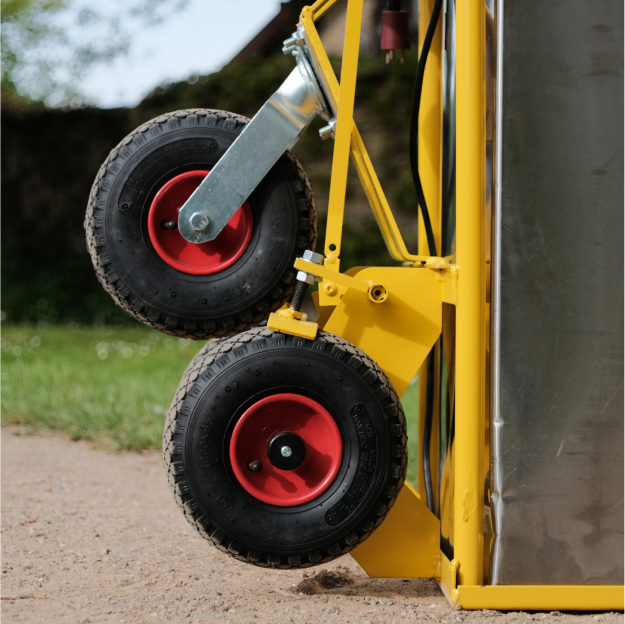
Easy Maneuverability
Festival-Ready Mobility: The Flexbar’s three-wheel system, and terrain handling make it adaptable to festival environments, allowing service where traditional bars can't go.
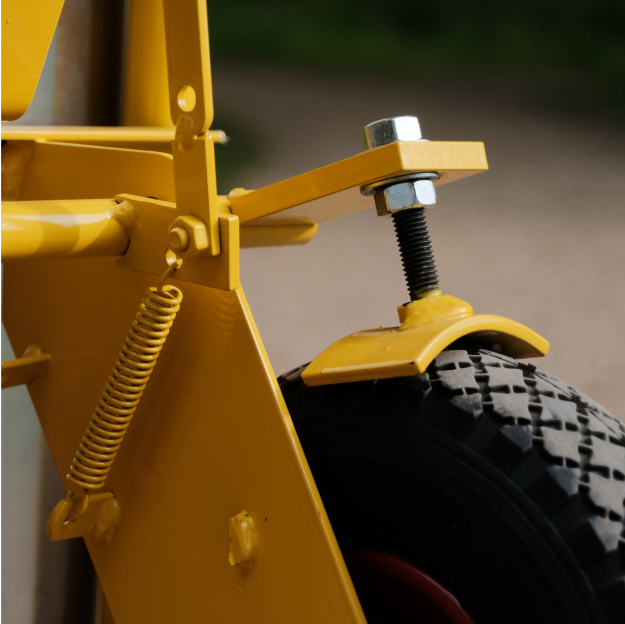
Intuitive Braking System
Press-to-Release Safety: A rear locking wheel with press-to-release handle ensures safety during pouring and parking.
Custom Client Materials
Professional User Manual: Beyond the physical product, the project includes fully developed manuals, guides, and operational tools — bridging the gap from concept to deployable solution.
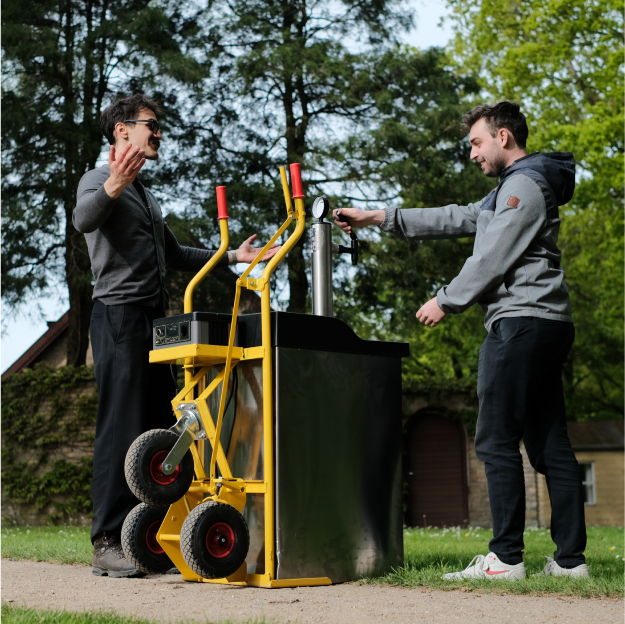
Inclusive by Design
Accessibility-Aware: Height, signage, and phrasing were considered to ensure the bar could serve all guests, including those with disabilities.
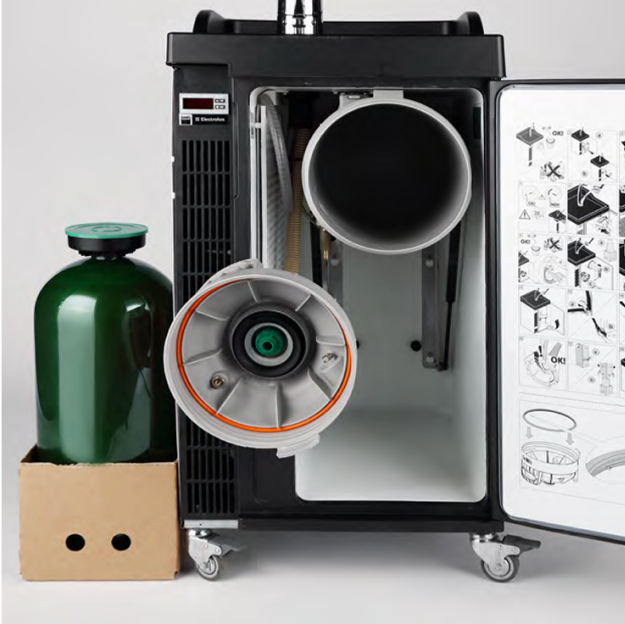
Seamless Integration
Works with Existing Flex20 System: The entire concept is built around Carlsberg’s existing infrastructure, making the solution immediately implementable without system changes.
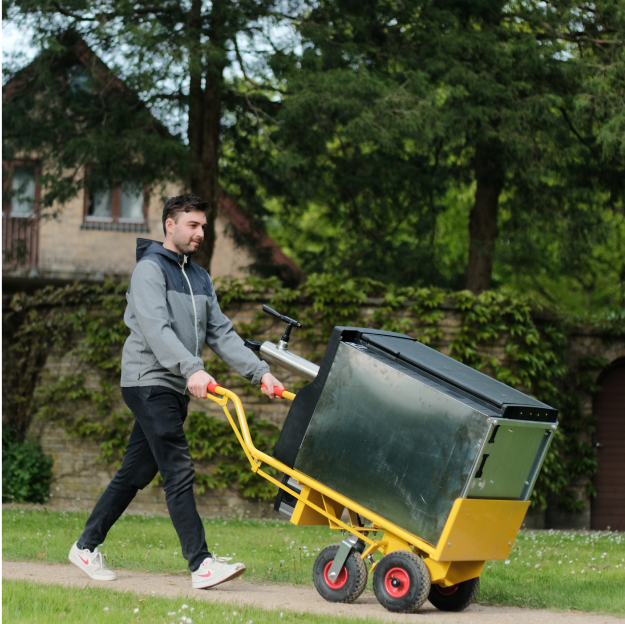
Fully Mobile Setup
Battery-Powered & Wireless: The unit runs independently with a 230V battery and onboard compressor — no cords, no setup delays.
From Concept to Execution
The final prototype was built for real-world testing and reflects production-ready thinking. In addition to the hardware, full support documentation was developed including an illustrated user manual, accessibility guidance, and training materials for staff use.
Field Testing
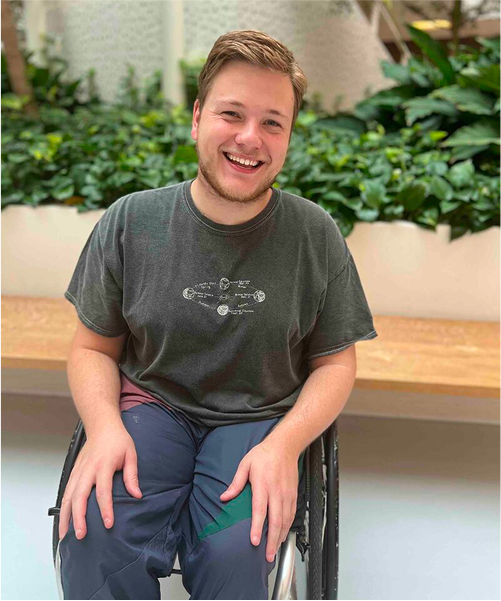
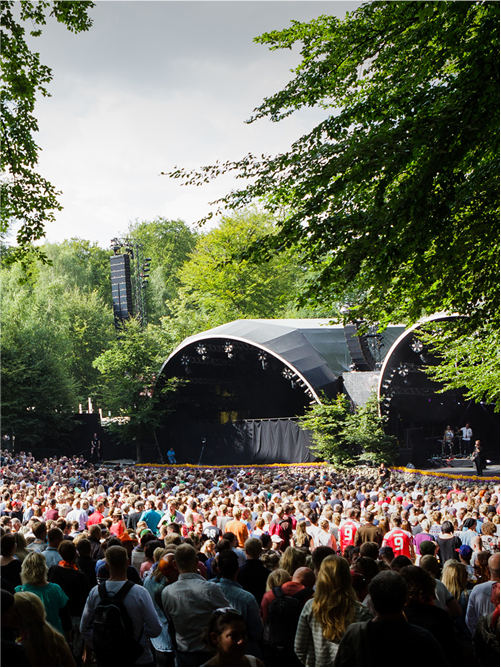
Interview with
Peter Holm
“Not everyone wants to be labeled or defined by a disability. Inclusion should be felt – not shouted.”
Peter highlighted the importance of designing for everyone without relying on labels. The goal is not to call out disability, but to ensure all users feel welcome, included, and empowered — without needing to ask.
“Even small things — like not having to reach or push through crowds — make a big difference when you live with a disability.”
“Design isn’t about labeling people — it’s about removing friction and letting everyone feel like part of the experience.”
“I could actually see myself ordering from this bar without needing to ask for help. That rarely happens at festivals.”
“The real barrier isn’t physical space — it’s being expected to adapt to a setup that wasn’t made with you in mind.”
